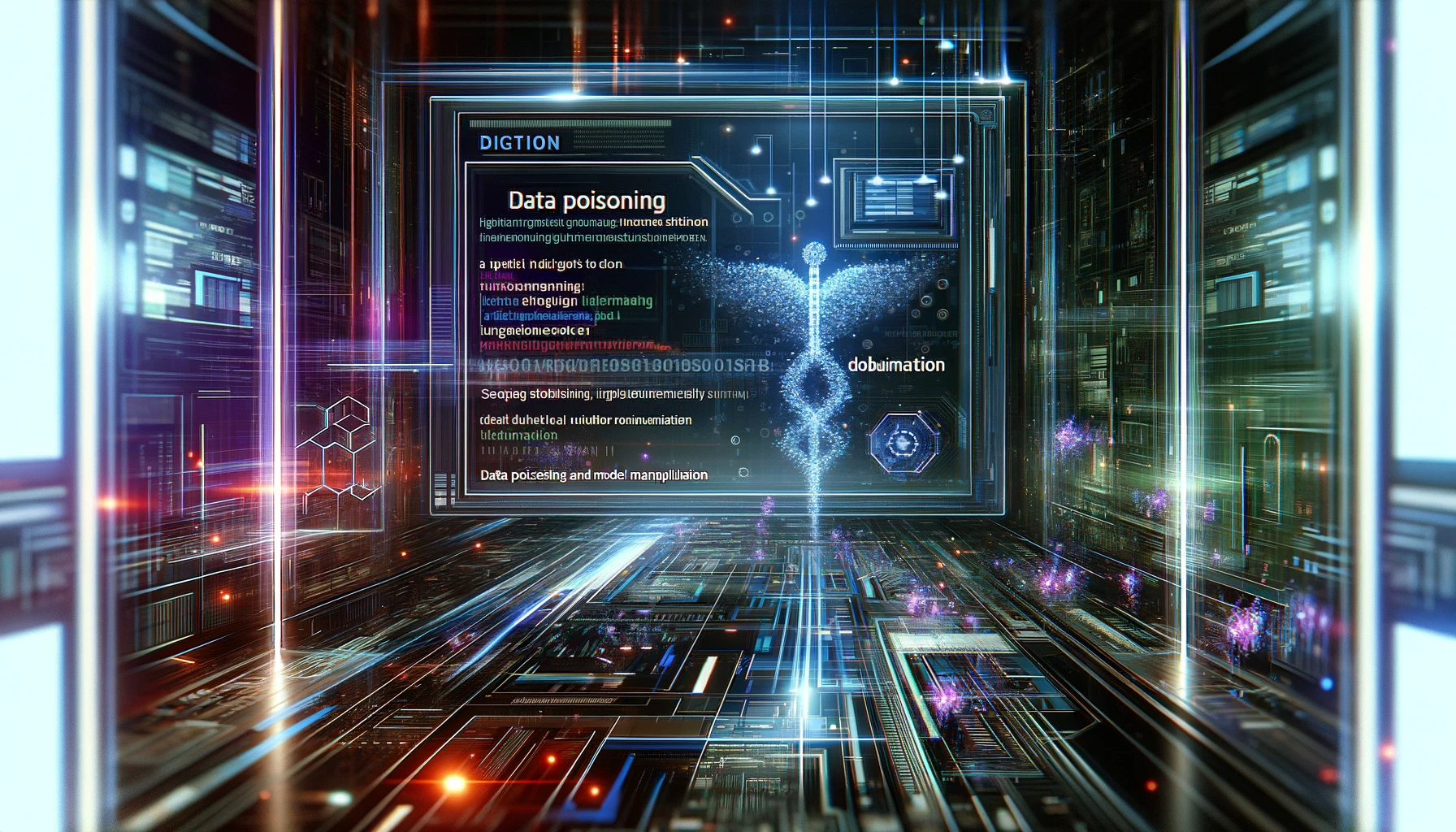The Invisible Threats in the Age of Artificial Intelligence
Artificial Intelligence (AI) systems have revolutionized various industries, from healthcare to finance. However, as AI technology advances, so do the methods of attack against it. Two such sophisticated threats are Data Poisoning and Model Manipulation. These threats not only jeopardize the integrity of AI models but also pose significant risks to companies leveraging AI technology.
What is Data Poisoning?
Data Poisoning is a type of cyber attack where malicious actors deliberately manipulate the training data of an AI model. This manipulation can lead to skewed outcomes, bias, and incorrect outputs from the AI model. The attack is subtle yet potent, affecting the AI system’s decision-making process and leading to faulty conclusions. Data Poisoning can be exploited by both external attackers and insiders with access to the model’s training data, making it a multifaceted threat.
The Threat of Model Manipulation
Model Manipulation, closely related to Data Poisoning, involves altering the underlying algorithms of an AI model. This can be achieved either through direct tampering with the model’s code or indirectly by manipulating the data it learns from. The outcome is an AI system that behaves in a way the attacker desires, potentially causing significant harm.
The Differential Impact of Attacks on AI Systems vs. Traditional Software
Understanding the Probabilistic Nature of AI System Attacks
One of the key distinctions between attacks on AI systems and traditional software lies in their outcomes. Attacks on AI systems, particularly through Data Poisoning and Model Manipulation, are often probabilistic rather than deterministic. This means that instead of causing a total system shutdown or immediate failure, these attacks subtly skew the outputs of the AI in specific circumstances. The AI system continues to function but with compromised integrity in its decision-making or output generation processes.
For example,
consider an AI model used for facial recognition. If its training data is poisoned, the model might still correctly identify faces most of the time. However, in specific scenarios dictated by the nature of the poisoning (such as recognizing faces with certain features), the model might exhibit biased or incorrect behavior. This probabilistic effect makes the attacks hard to detect and diagnose, as the system doesn’t fail outright but degrades in reliability and accuracy in certain contexts.
Comparing with Traditional Software Vulnerabilities
In contrast, traditional software systems when compromised, typically exhibit more immediate and noticeable effects. For example, a traditional SQL injection attack on a database-driven application can lead to immediate unauthorized access or data leakage. The effect is direct and observable, often leading to a complete breakdown of the expected functionality.
This contrast highlights a fundamental difference in how AI systems and traditional software respond to attacks. While traditional software attacks often exploit specific vulnerabilities for immediate effect, attacks on AI systems are more about subtly corrupting the decision-making process over time. The probabilistic nature of AI attacks implies that they may not be immediately evident, making them more insidious and potentially more damaging in the long run, as they could erode trust in the system’s outputs.
Real-World Implications
The implications of these attacks are far-reaching. For instance, a data-poisoned AI system could fail to correctly identify fraudulent activities, leading to financial losses. In healthcare, manipulated models could misdiagnose patients, putting lives at risk. The threat extends to any field that relies on AI for decision-making, emphasizing the need for robust security measures.
Assessing the Efficacy of Traditional Security Practices Against AI-Specific Attacks
The Limitations of Conventional Security in AI Contexts
While traditional security practices form the bedrock of cybersecurity, their effectiveness against AI-specific threats like Data Poisoning and Model Manipulation is limited. Practices such as implementing firewalls, securing software against unauthorized access, and protecting data integrity are fundamental. However, these measures primarily guard against direct intrusions or tampering and may not fully address the subtler, more insidious nature of AI-specific attacks.
For instance,
a robust firewall can prevent unauthorized access to a network, but it does not address the issue of compromised data integrity within an AI’s training set. Similarly, secure software practices can protect against hacking and data breaches, but they may not be equipped to detect subtle manipulations in an AI model’s learning process.
AI-Specific Security Measures
To effectively safeguard AI systems, additional, AI-specific security measures are necessary:
- Data Provenance and Quality Control: Unlike traditional systems where data integrity checks are often binary (corrupted or not), AI systems require nuanced evaluation of data quality and source. Ensuring the provenance and maintaining the quality of training data is essential.
- Model Transparency and Interpretability: AI systems, especially those based on deep learning, are often criticized for being ‘black boxes.’ Enhancing model transparency and interpretability can help in understanding how certain inputs affect outputs, making it easier to spot anomalies caused by data poisoning.
- Continuous Model Monitoring and Auditing: Regular monitoring of the model’s performance against expected benchmarks can detect deviations that might indicate tampering or poisoning.
- Adversarial Training and Robustness Checks: This involves training the AI model with adversarial data or under challenging conditions to improve its resilience against manipulation.
- Ethical AI and Bias Evaluation: Regularly assessing AI models for bias and ethical implications can preemptively address some of the issues introduced by poisoned data.
Conclusion
Understanding this distinction is crucial for developing effective defense strategies. While traditional software security focuses on preventing unauthorized access and immediate exploitation, securing AI systems requires constant vigilance over the integrity of data and the ongoing behavior of the model. It underscores the importance of regular audits, continuous monitoring, and robust validation processes in maintaining the reliability and trustworthiness of AI systems.
While traditional security practices lay the groundwork for cybersecurity, AI-specific threats demand additional, tailored measures. It’s not just about protecting the perimeter or securing the software; it’s about ensuring the integrity and reliability of the data and the AI model throughout its lifecycle. As AI continues to evolve and integrate into critical systems, the security approach must evolve correspondingly, blending traditional practices with AI-specific strategies to safeguard against these nuanced and evolving threats.
As AI continues to evolve, so does the complexity of threats against it. Understanding and preparing for these risks is not just a technical necessity but a business imperative. Companies leveraging AI must stay vigilant and proactive in securing their AI systems against Data Poisoning and Model Manipulation to safeguard their operations and maintain trust in their AI applications.



